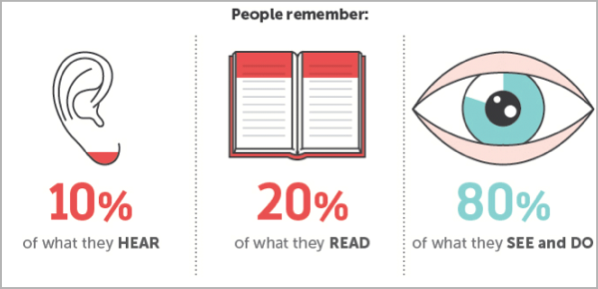Every two minutes today we snap as many photos as the whole of humanity took in the 1800s. 10% of all images taken by mankind have been snapped in the last 12 months. Our cultural norms and available technology is changing and we are taking more photos than ever before (Muther, 2013). Everyone has access to a smartphone, tablet or camera and people are just more willing to look through a screen to capture that sunset rather than appreciate it in real life. We don’t just take a lot of photographs we also have a burning desire to upload them for the world to appreciate.
Photos are becoming a universal language that everyone understands, so why should marketers take note? Here are 9 reasons why the power of images shouldn’t be overlooked in digital.
1) 63% of social media is made up of images. Essentially social media is made up of thousands of customers. Social media has developed and improved over the years and has become more image friendly. When the Facebook timeline was introduced there was a reported 46% increase with brand engagement and a 65% increase in photo and video engagement.
2) Psychologist Jerome Bruner has discovered that using images in your content could make more customers remember you. He suggests that people only remember 10% of things they hear, 20% of what they read and 80% of what they see. By aiming to increase imagery within websites, apps, emails and more Bruner suggests you could make a lasting impression on your customers.
3) 60% of consumers are more likely to consider or make contact with a local business if they see a picture on the Google local business homepage. Images evoke emotions from us often leading us to feel like we trust a business more (Branthwaite, 2002)
4) 67% of customers say that a good quality image is more important than a long description. 53% of people even believe that a quality picture is more important that ratings and reviews (Sibley, 2012)
5) Researchers have found that 65% of the population is made up of visual learners, leaving auditory and experiential learners in their dust.
6) Studies suggest that if marketers can come up with an intelligent, compelling image you could get up to 94% more views than your boring competition!
7) The same goes for email marketing. According to Hubspot, 65% of users like emails that are mostly made up of images, while only 35% prefer their emails to be text heavy.
8) After picking the perfect picture, having that picture shared across the Internet is the icing on the cake. And you may even be able to have your cake and eat it, data from PewResearch proves that 35% of individuals online are happy to share images they find on the internet.
9) Researchers from The Massachusetts Institute of Technology discovered that the human brain can process entire images in as little as 13 milliseconds. With the cultural shift making us more impatient than ever, a photo might just be the perfect way to get across your message without running the risk of boring your customer (Boston Globe, 2013).
So how do I make powerful visual marketing?
- Don’t just get a stock image. Although tempting to just pop in a picture from shutter stock, this probably wont give you the engagement you are after. Think about creating a infographic or video content too, this can now be done for much cheaper and more than likely in-house.
- Create call to action points. Images are great for convincing people to take an action, whether that’s liking a picture or registering for a newsletter. If your content is creative enough, people might even choose to share it, without even having to ask. Utilising opportunities with powerful imagery is a match made in heaven.
- Ensure your omnichannel is seamless. There isn’t much worse when you want to load some interesting content on your mobile but it turns out the content isn’t compatible. Ensure all of your channels are seamless to avoid customer frustration. Find out more about omnichannel marketing.
Overall I think it is fair to say that imagery not only tells 1000 words but it is also a powerful tool for marketers to get their message across whist encouraging engagement. So if your company are still relying on heavy text campaigns it is time to have a rethink.
References
Branwaite, A. (2002)An internationl Journal: investigating the power of imagery in marketing communications. Vol 5, p.164-171. Emerald.
Muther, C. (2013) Instant gratification is making us perpetually impatient.[online] <https://www.bostonglobe.com/lifestyle/style/2013/02/01/the-growing-culture-impatience-where-instant-gratification-makes-crave-more-instant-gratification/q8tWDNGeJB2mm45fQxtTQP/story.html> [accessed January 20 2016]
Sibley, A. (2012). 19 Reasons You Should Include Visual Content in Your Marketing. [online] < http://blog.hubspot.com/blog/tabid/6307/bid/33423/19-Reasons-You-Should-Include-Visual-Content-in-Your-Marketing-Data.aspx.> [accessed January 20 2016]


